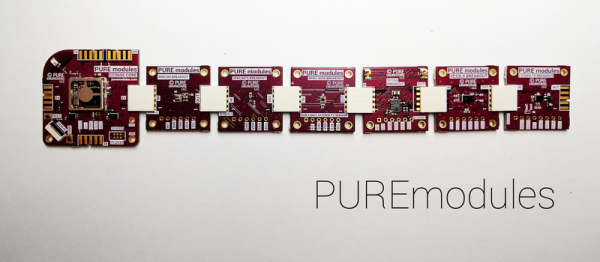Look, I’ve been there too. First the project just prints debug information for a human in nice descriptive strings that are easy to understand. Then some tool needs to log a sensor value so the simple debug messages gain structure. Now your debug messages {{look like : this}}. This is great until a second sensor is added that uses floats instead of ints. Now there are sprinklings of even more magic characters between the curly braces. A couple days later and things are starting to look Turing complete. At some point you look up and realize, “I need a messaging serialization strategy”. Well you’ve come to the right place! Continue reading “The Seedy World Of Message Serialization”
protocol buffers2 Articles
PURE Modules Aim To Make Prototyping Easier
[Sashi]’s PURE modules system wants your next wireless microcontroller and sensor module project to be put together using card-edge connectors. But it’s a lot deeper than that — PURE is an entire wireless gadget development ecosystem. Striking a balance between completeness and modularity is very difficult; a wire can carry any imaginable electronic signal, but just handing someone a pile of wires presents them a steep learning curve. PURE is at the other end of the spectrum: everything is specified.
So far, two microcontroller options are available in the system, the nRF52 series and TI’s CC2650. Both of these run the Contiki OS, so it doesn’t matter which of these you choose. Wired data is all transmitted over I2C and connects up via the previously-mentioned card-edge connectors. On the wireless side, data transport is handled through an MQTT broker, using the MQTT-sn variant which is better suited to small radio devices. At the protocol layer everything uses Protocol Buffers, Google’s newest idea for adding some structure to the data.
Continue reading “PURE Modules Aim To Make Prototyping Easier”













